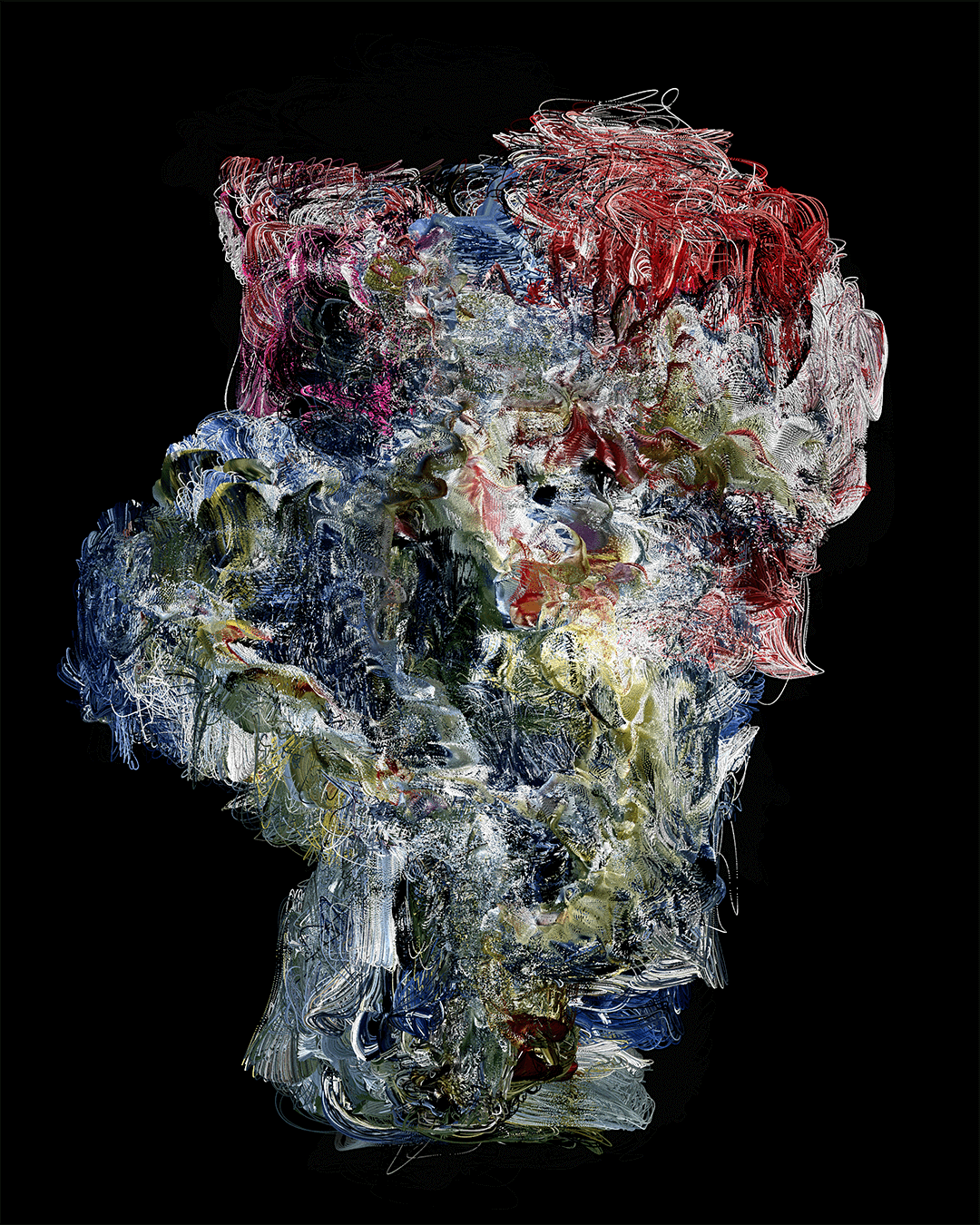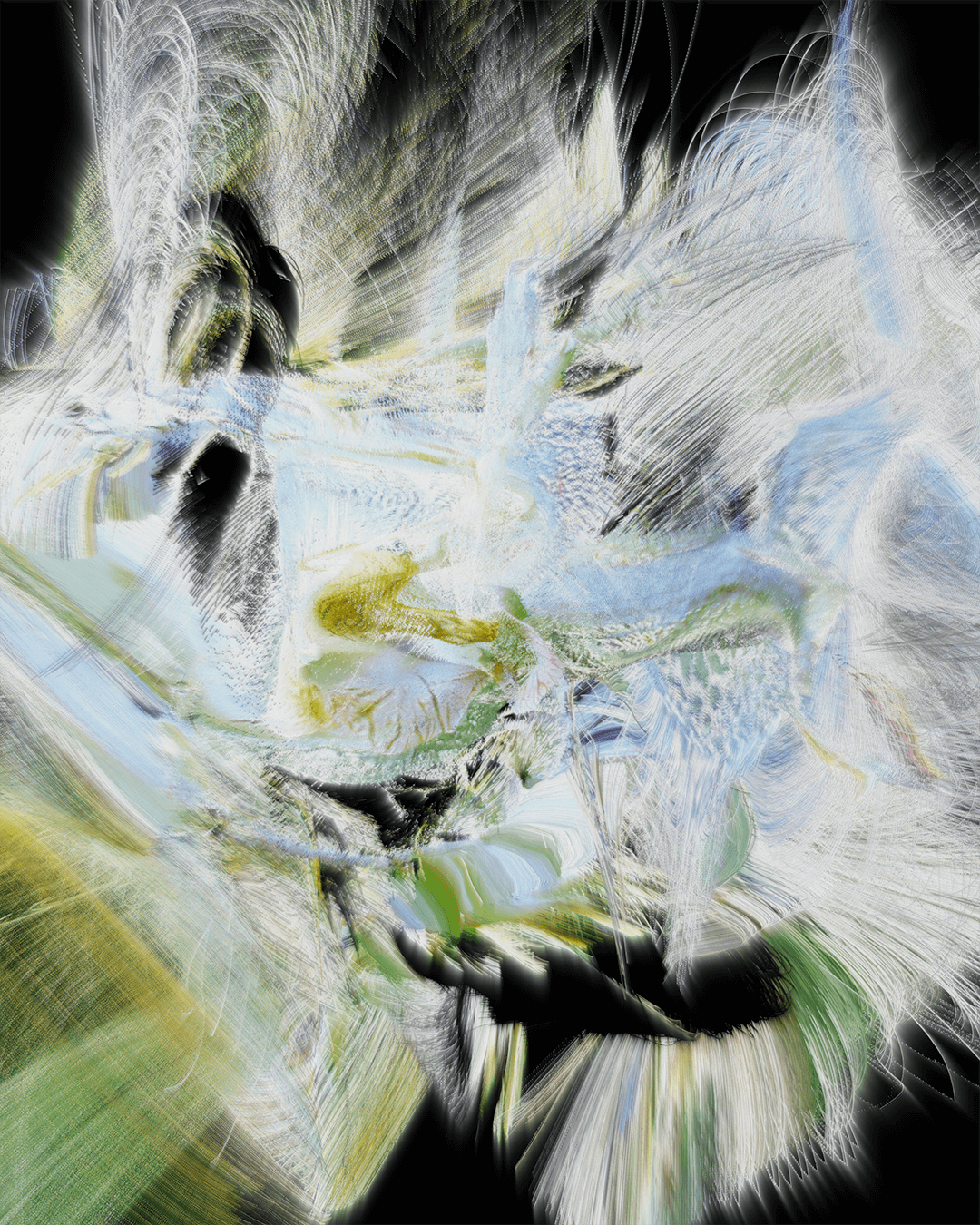Gianluigi Marin is an Italian designer and visual artist whose work explores the evolving relationship between natural forms and computational systems. Through his ongoing project Frammenti Sintetici, he creates interactive ecosystems where organic-inspired structures emerge, transform and dissolve within digital environments. His practice blends generative processes, real-time data, sensors and human interaction to build artworks that behave like living organisms, sensitive to presence, movement and environmental conditions. Most of his works are not meant to be merely observed; they are conceived as immersive experiences that invite viewers to influence and activate the work. By merging technology with the poetics of nature, he investigates themes of fragility, transformation and the shifting boundaries between the organic and the synthetic. His work aims to create moments of reflection, where digital matter reveals both its vulnerability and its capacity for renewal.
1. What is your artistic vision?
My artistic vision is to explore the intersection between natural forms and digital matter. Through Frammenti Sintetici, I investigate how organic structures can evolve, dissolve and re-emerge inside synthetic environments, behaving like living systems shaped by code, data and interaction. I’m interested in creating visual artworks that respond to human presence, sound, temperature or environmental inputs, allowing each work to exist in a state of continuous transformation.
What matters to me is that these pieces are not simply objects to look at, but experiences to inhabit. I want the artworks to be influenced by the environments in which they are exhibited, becoming sensitive to the people and conditions around them. By integrating interaction and environmental data, I invite viewers to move from observation to participation, to touch, to influence and to reflect. In this way, the artwork becomes a living encounter, a space where digital life can reveal both its vulnerability and its capacity for change.
2. How are you using emerging technologies to engage with our world?
I use emerging technologies as active materials, elements that shape the behaviour of my artworks and connect them directly to the world outside the screen. Tools such as real-time sensors, environmental data and generative algorithms allow me to create pieces that do not simply display visuals but respond to conditions in real time. Body movement, breath, sound waves etc become inputs that alter the morphology, colour or vitality of digital organisms. Technology becomes a bridge between the viewer and a synthetic ecosystem that feels alive, creating a dialogue between human presence and digital matter. In this way, emerging technologies help me reveal how interconnected our world is, and how even artificial systems can reflect ecological, biological or emotional dynamics.

3. What interests you about using new technologies?
I’m fascinated by the ability of generative systems to explore aesthetic and conceptual territories that extend beyond human intuition. Algorithms can uncover forms, behaviours and visual solutions that surprise me, opening new creative pathways. For me, this isn’t about replacing human creativity, but about expanding it, building a symbiotic relationship where technology amplifies my intentions and reveals new possibilities.
What interests me even more is how emerging technologies enable new forms of interaction between artworks and users. Body movement, environmental data or subtle gestures can become meaningful triggers for digital transformation. These tools make it possible to design systems that behave like living organisms, capable of responding, adapting, or evolving in real time. In this sense, technology becomes both a collaborator and a catalyst, allowing me to explore better my ideas.

4. How would you describe the relationship between art and innovation?
For me, art and innovation share a common ground: both explore possible futures. Art gives a human and poetic dimension to technological progress, and technology expands the language of art. Innovation provides new tools, but art gives them meaning. When the two meet, they can reveal unseen perspectives, challenge our assumptions, and reshape how we experience reality.
5. What do you want the viewer to take away from your work?
I want viewers to leave with a sense of having encountered a living presence.Something fragile, unfamiliar, yet emotionally resonant. My works invite people to slow down and observe subtle transformations: colours that emerge only through touch, forms that collapse when ignored or organisms that grow in response to environmental conditions. By creating digital life that reacts to human behaviour, I want to place the viewer at the centre of the experience ,giving them the freedom to decide when, and if, interact. At the same time, many of my pieces embrace the inevitability of decay or dissolution, reminding us that all living systems, natural or synthetic, exist in a delicate balance.What I ultimately hope is that viewers experience a mix of curiosity, empathy and reflection. If they can see echoes of natural life within digital matter, and feel a renewed awareness of how fragile and interconnected our world is, then the work has achieved its purpose.